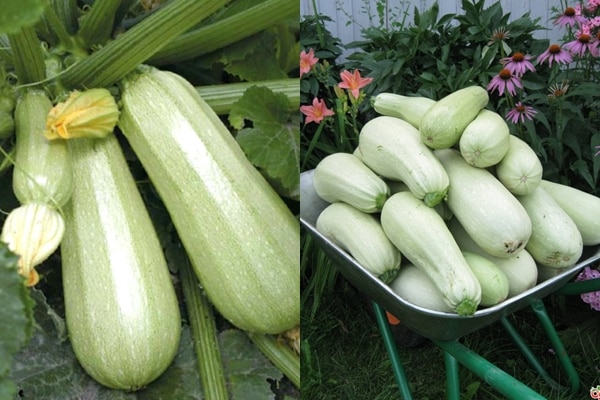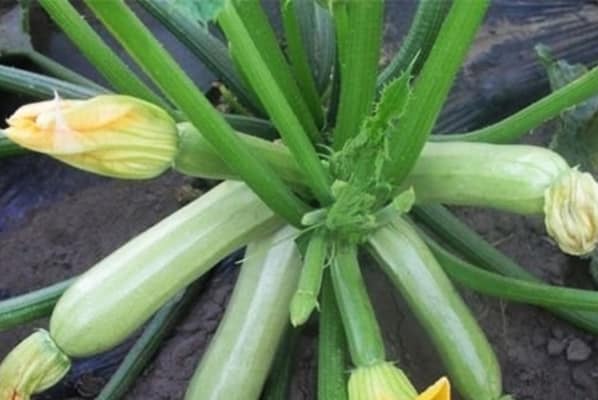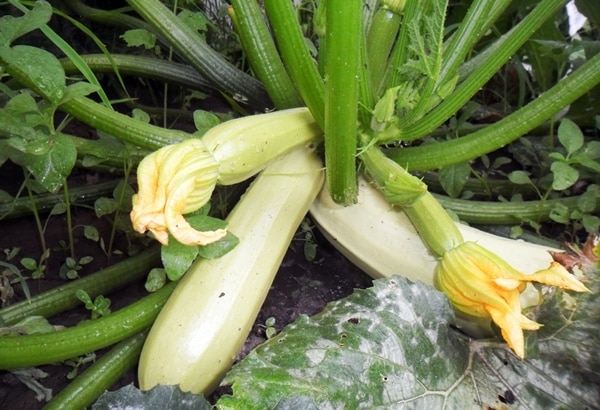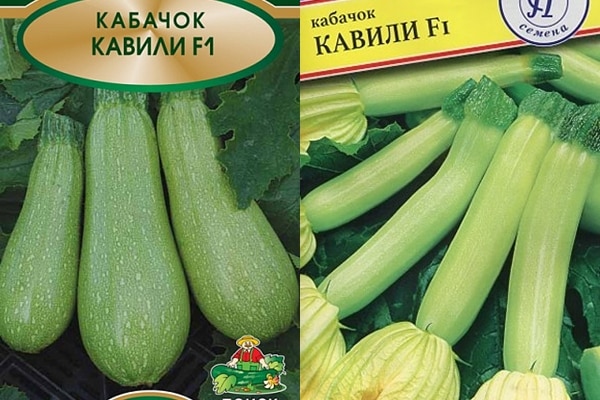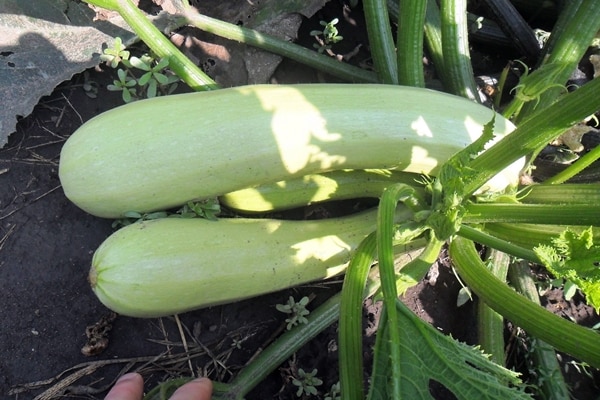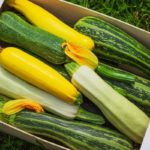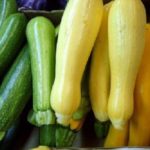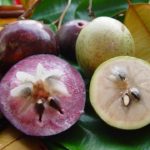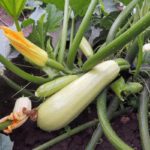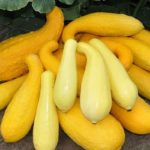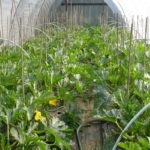Cavili f1 zucchini was bred by Dutch breeders. Today it is considered one of the best hybrids on the market. Its advantage, unlike many varieties, is early ripening, self-pollination and productivity - because of these qualities, this bush squash is in great demand.
Description of the variety
Cavili squash is a plant with dark green leaf blades, on which there are spots of white. This vegetable has a very compact size, with small internodes - it grows in the form of a bush. Unlike other varieties, it does not “spread” to the sides.
This hybrid feels good both in open ground and under film cover. Produces predominantly female flowers. Since it is self-pollinating, the absence of bees will not prevent the growth of a large number of vegetables on it.
The crop begins to bear fruit early - already 40 days after the appearance of young plants. Its fruits are light green in color, smooth, and cylindrical in shape. The skin on young zucchini is thin, and the flesh is very juicy and tender.
The fruits grow together and for a long time - more than 60 days from the beginning of fruiting. Plant yield per 1 m2 reaches up to 9 kg. Each individual vegetable grows up to 22 cm, and they weigh an average of 300 g each. This hybrid has increased resistance to overripening. Even those vegetables that have not been picked for several days will have the same wonderful taste as those that have just reached medium size.
Growing
The Kavili zucchini hybrid is unpretentious and easy to care for.
Sow this vegetable crop in light, nutritious soil with neutral acidity. It is desirable that the predecessors of this pumpkin representative be:
- potato;
- onion;
- peas, beans or beans;
- cabbage.
Before sowing the crop, you need to enrich the soil with compost or humus. Green manure, a mixture of ash and superphosphate fertilizer, also gives good results.
Grow zucchini plants two methods. One of them is using seedlings, and the second is by direct sowing in the ground.
In the first case, seedlings are sown in mid-spring. To do this, place one seed in the hole of each pot, or preferably 2–3. After the appearance of young plants, weak specimens are pulled out and strong specimens are left.After 30 days, the seedlings are transferred to the holes to a permanent place of development.
Each of the options implies that a group of plants in the garden bed will be located at a distance of 70x140 cm. This distance between the zucchini will allow for full development.
You need to know that store-bought seeds are treated with tyramine (a nutrient), so you should not soak such seed material.
Young plants require a lot of light, heat and moisture. Failure to comply with these conditions sharply reduces the yield of Kavili zucchini, and the taste is also lost in those fruits that have grown. The temperature for active development of the culture should be 20 °C and above. If the amount of heat is insufficient, then growth may stop.
The volume of water should be up to 10 liters per m2. Also, in order for the plant to develop safely and receive enough light, it is necessary to periodically weed, loosen the top layer of soil, and, if necessary, fertilize.
Features of care
Zucchini Kavili f1 likes to grow in light soils, but if you plant the plant in heavy, clay soil, it will develop, but its yield will only decrease. Therefore, to improve the water and air permeability of the soil, you need to add river sand and peat.
Acidity also plays an important role for the plant. Ideally, it will be neutral. In order to reduce the acidity of the soil, dolomite flour or lime is added to it.
Experts recommend that if the crop is planted in a shaded area, then it is necessary to thin out the plants during the flowering period and the formation of ovaries.
Removing a couple of leaves will allow more light to come in.
You should also try to harvest in a timely manner.Although the high quality of the fruits is preserved when their harvest is delayed, the formation of new zucchini slows down. This negatively affects productivity.
Advantages and disadvantages
Gardeners value the following qualities in zucchini of this variety:
- early fruit appearance;
- excellent yield;
- self-pollination of the hybrid;
- long fruiting period;
- good resistance to diseases;
- high quality fruits.
If their care is insufficient, and, in particular, there is not enough moisture in the area where they grow, then the yield will be low. Plants also suffer from frosts both in spring and autumn.
Pests and diseases
In general, Cavili is resistant to disease, but preventive measures only increase the gardener's chances of enjoying its wonderful fruits:
- When infested by aphids, the crop is sprayed with one of the following preparations: Confidor, Iskra or Fosbecid.
- Spider mites are fought against using onion infusion. It is made from husks, laundry soap and red pepper powder. Take a bucket of water and steep the outer skin of the onion in it. At the end they give you grated soap and hot spices.
- Treating zucchini with ground sulfur helps against powdery mildew.
- For anthracnose, Bordeaux mixture will be effective.
If you alternate crops in the garden, this will only increase the chance of having healthy plants.
Harvest and storage
The ripening period for the beginning of the harvest is 45 days after the appearance of young plants. Expectation of the first fruits - July-early August. It depends on the climate zone. The crop bears fruit for a long time, until frost.
You need to remove the fruits on time, because they stop the bushes from growing and developing.If you plan to store them for a long time, then it is necessary to cut the zucchini together with the “tail”, and in the case of quick consumption of the fruit - without it.
Vegetables of milky ripeness are stored for a maximum of two weeks at a temperature of 2 °C. After this time, they become rough, wrinkled and begin to deteriorate. In order for zucchini to be stored longer, you should cut off the ripened fruits, whose skin will be thicker.
The fruits are placed for safekeeping in boxes lined with straw on the bottom. The zucchini should not touch each other. This place needs to be dry and dark. For long-term storage you can freeze zucchini. To do this, they are washed, cut, packaged and placed in a chamber.
The characteristics of these fruits say that they are ideal for preservation. They are marinated, after which, when used, they acquire an appetizing crunch and do not lose their taste. Zucchini is also fried, stewed, and caviar is prepared.
Hybrid Kavili zucchini is so loved by our gardeners that they can no longer imagine their absence. After all, this vegetable is distinguished by its early ripeness, is easy to care for, and produces a lot of delicate light green fruits that all family members really like.

